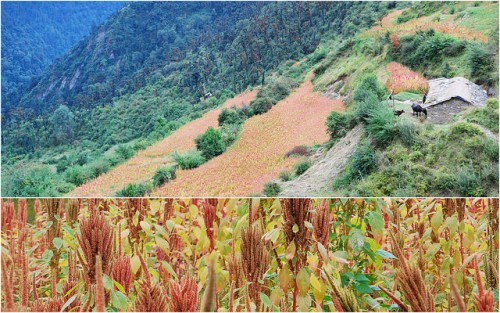
Customs and Cuisine of Mexico
Cuisine of Oaxaca, Land of the Seven Moles
Oaxaca is famous for its delicious and complex moles (mo-lays). These intricate sauces, made by toasting and grinding spices, seeds and chiles, are truly the hallmark of the region. Local tribes were preparing moles and raising corn, tomatoes, squash, beans, turkeys, cacao and chiles long before Cortez ever set foot in the “New” World. Mole is drizzled over meats, enchiladas and much more.
The corn dough known as masa also plays a huge role in Oaxacan cooking. It is used for tamales and a wide variety of tortillas, from thick to thin, plain to stuffed. Popular cheeses include the fresh, crumbly queso fresco; aged, firm queso añejo; and a local string variety that’s formed into a flattened ball. The herbs hoja santa (which has a distinctive, anise-like flavor) and epazote (pungent, almost medicinal) are common seasonings.
The Spanish Conquistadores brought chickens, cattle, pigs (and thus the all-important lard), and spices such as canela (true cinnamon), cumin and cloves. Native cooking techniques such as steaming and dry roasting on clay griddles were joined by Spanish baking and frying.
Oaxaca is also the center of chocolate production in Mexico. The history of chocolate in Oaxaca goes back centuries. An Oaxacan hot (or cold) chocolate drink is different from what is served in the US. In Oaxaca, cacao beans are ground together with sugar and/or cinnamon, almonds and vanilla, then the paste is pressed into solid bars. Melting the bars in hot milk produces a beverage with a rich, complex taste. The traditional way of blending the milk and melted chocolate is with a molinillo. This wooden mixing tool has a long handle with a perforated bulb and loose rings at the bottom. You hold it between your palms, rub your hands together, and the tool spins, mixing and frothing the chocolate.
Dining Etiquette:
Customs – Dining
- Do not begin eating until the host says, “Buen provecho!”
- Mexicans do not switch knives and forks. The knife remains in the right hand, and the fork remains in the left. When the meal is finished, the knife and fork are laid parallel to each other across the right side of the plate.
- When not holding utensils, your hands are expected to be visible above the table: this means you do not keep them in your lap; instead, rest your wrists on top of the table (never your elbows).
- Any salad will usually be served after the main course.
- The most honored position is at the head of the table, with the most important guest seated immediately to the right of the host (women to the right of the host, and men to the right of the hostess). If there is a hosting couple, one will be at each end of the table.
Sources:
Source: www.vivaoaxacafolkart.com
Photo by Abhijeet Rane – originally posted to Flickr titled Amaranth Fields. Used under Creative Commons Attribution 2.0 Generic.
View Recipes from Mexico
Mexico
